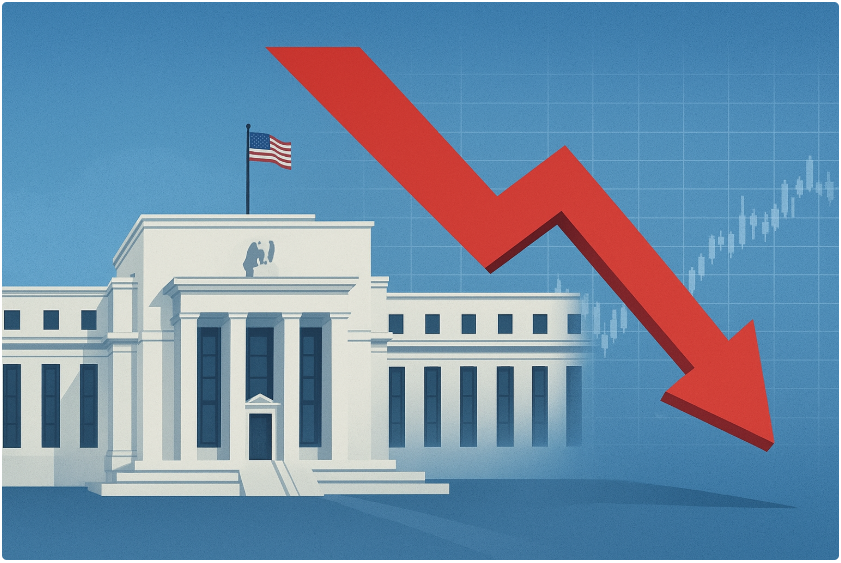Impact of Federal Reserve Rate Cuts on Stock Markets
The Federal Reserve’s recent interest rate cut of 0.25% in October 2025 has reignited discussions on the relationship between monetary policy and stock market performance. Investors, analysts, and economists are closely evaluating how the Fed’s interest rate decisions will shape U.S. economic growth, inflation trends, and global financial markets heading into 2026.
While rate cuts are designed to boost borrowing and investment, their impact on the stock market often depends on the broader macroeconomic context, investor sentiment, and corporate earnings outlook.
Overview of the October 2025 Federal Reserve Rate Cut
The Federal Reserve (Fed) announced its second rate cut of 2025, following a similar 25 basis point reduction in September.
Key drivers behind the Fed’s decision:
- Economic uncertainty linked to data gaps caused by the recent U.S. government shutdown.
- Slowing inflation giving the Fed room to stimulate growth.
- A desire to support liquidity and ensure credit market stability.
Financial experts describe this move as part of a “soft-landing strategy”, where the Fed aims to lower rates without triggering excessive inflation. The policy is also viewed as a signal of caution amid concerns of weakening consumer spending and uneven job market data.
Immediate Impact on U.S. Stock Markets
The U.S. stock market reaction was mixed after the Fed’s announcement, reflecting investor uncertainty over future rate paths and economic growth.
| Market Index | Country | Change on Oct 29, 2025 (%) | Commentary |
|---|---|---|---|
| Nasdaq | U.S. | -0.97 | Tech sector weakness shows rate sensitivity. |
| Dow Jones | U.S. | -0.75 | Industrial and cyclical stocks fell amid cautious sentiment. |
| S&P 500 | U.S. | +0.25 | Balanced gains in defensive and dividend sectors. |
| S&P/TSX Composite | Canada | +0.40 | Boosted by U.S.-Canada policy coordination and weaker USD. |
Analysis
- Technology stocks declined sharply as growth valuations remain sensitive to interest rate moves.
- Value and dividend-paying sectors outperformed, supported by lower bond yields.
- Market volatility remains elevated as investors await Fed Chair Jerome Powell’s next policy remarks.
This divergence illustrates how rate cuts impact sectors differently, shaping opportunities for sector rotation investing and portfolio diversification.
Impact on Canadian Stock Markets
The Canadian stock market responded more positively to the Federal Reserve’s rate cut. The Bank of Canada quickly followed with its own policy easing, cutting the overnight rate to 2.25%—the lowest in years.
Key Drivers Behind the Rally:
- A weaker U.S. dollar improved Canadian export competitiveness.
- The energy and materials sectors gained on higher commodity prices.
- Expectations for monetary easing across North America lifted overall investor confidence.
The S&P/TSX Composite Index rose 0.4%, signaling optimism that lower interest rates could support growth amid global trade uncertainty.
Market Interpretation and Economic Outlook
While rate cuts typically boost equities, the October 2025 policy shift drew a cautious response due to ambiguous forward guidance from the Federal Reserve.
Key Takeaways for Investors:
- Rate cuts can stimulate the economy, but timing and communication matter.
- Tech-heavy indices like the Nasdaq Composite remain vulnerable to policy uncertainty.
- Dividend stocks and value equities may outperform in a lower-rate environment.
- Inflation expectations and employment data will guide the Fed’s future policy direction.
According to analysts, the stock market outlook for 2025-2026 will depend on whether the Fed’s strategy successfully balances growth, inflation, and financial stability.
Central Bank Rate Trends (2024–2025)
| Central Bank | End-2024 Rate | Oct 2025 Rate | Direction |
|---|---|---|---|
| Federal Reserve | 5.25% | 4.75% | 🔻 Two consecutive rate cuts |
| Bank of Canada | 3.00% | 2.25% | 🔻 Rate easing to support exports |
| European Central Bank | 3.50% | 3.25% | ⚖️ Mild easing trend |
| Bank of England | 5.00% | 4.75% | 🔻 Gradual policy shift |
These synchronized moves highlight a global monetary easing cycle, with major economies prioritizing growth stimulation over aggressive inflation control.
Conclusion
The Federal Reserve’s 2025 rate cuts represent a pivotal moment in monetary policy, influencing stock markets, bond yields, and global capital flows.
While the S&P 500’s resilience suggests investor optimism, the Nasdaq’s pullback underscores persistent uncertainty in growth sectors. Investors should stay alert to Fed meeting minutes, inflation trends, and employment data for clearer signals.
For now, the policy shift provides a short-term tailwind for equities—especially dividend-paying and defensive stocks—while setting the stage for a potential market rebound if economic indicators stabilise in late 2025.
About MarketFacts
MarketFacts provides in-depth investment research, market analysis, and portfolio insights across asset classes and geographies. Our mission is to help investors make informed decisions to invest safely in increasingly uncertain investment scenarios using our investment research reports.







